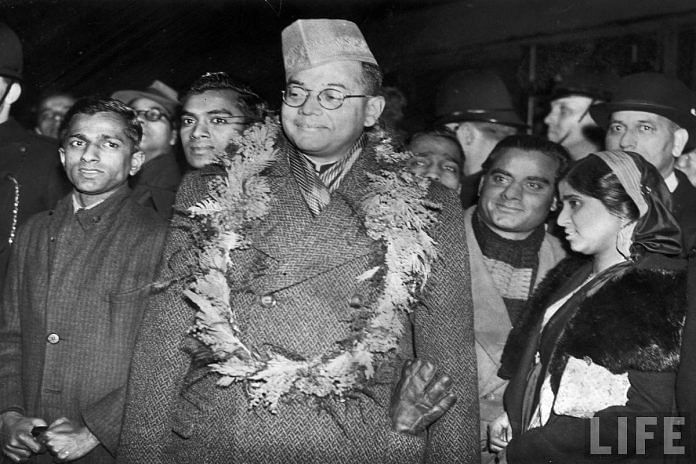New Delhi: Almost three decades before Prime Minister Narendra Modi began his popular radio programme Mann Ki Baat, freedom fighter Subhas Chandra Bose had spearheaded his very own radio show — Azad Hind Radio.
“Standing at one of the crossroads of world history, I solemnly declare on behalf of all freedom-loving Indians in India and abroad, that we shall continue to fight British imperialism till India is once again the mistress of her own destiny,” he said on 28 February 1942, declaring war against India’s long-time colonial rulers on air.
The Cuttack-born leader popularly known as Netaji was a staunch believer of the idea that an armed struggle was India’s only route to independence. Part of the radical wing of the Indian National Congress in the 1920-30s, he had to eventually part with the party following differences with Mahatma Gandhi and other senior leaders.
Known to be later influenced by leaders like Benito Mussolini and Adolf Hitler, he then went on to set up his own provisional government called Azad Hind in occupied Singapore in 1943, which was supported by the Axis powers of Imperial Japan, Nazi Germany, the Italian Social Republic and their allies.
After setting up a Free India Centre in Berlin, Bose started Azad Hind Radio as part of Germany’s radio service, which first aired on 7 January 1942. A widespread German-funded operation, the programmes were meant to show solidarity with Indians living abroad, as well as those still living in the subcontinent. They included news bulletins transmitted in English, Gujarati, Marathi, Bengali, Pashto, Tamil, Persian and Telugu.
On Subhas Chandra Bose’s 123rd birth anniversary, ThePrint examines the impact and legacy of Azad Hind Radio.
Also read: The Indian freedom fighter Japan remembers as its beloved chef
Bose and India’s tryst with radio
Radio’s presence in India dates back to the colonial era, quite notably the establishment of the All India Radio under the tutelage of BBC’s Lionel Fielden. As historian Diya Gupta points out in her paper Raj in Radio Wars, broadcasting became a tool for transnational propaganda during the time of World War II.
According to a listener research survey conducted by AIR across five cities in India in 1940, many Indians were tuning in to listen to news that was hostile to Britain. German radio soon took over British broadcasts, described by Fielden as being “swallowed by the masses like a patent medicine advertisement”.
In the two years after the end of the war, the number of radio receiver licences in India rose from 2,05,130 in 1946 to 2,43,838 in 1947. Even the Maharaja of Jodhpur noted in December 1940 that almost every owner of a wireless receiving set in his city would tune into broadcasts from Berlin, writes Gupta.
If radio had become a tool in the domestic war being fought with the Indian national movement, listening to the radio had become an act of community and Subhas Chandra Bose was at the centre of it all. Broadcasting from Berlin, Bose celebrated the wave of Japanese victories over British territories and passionately spoke about India’s Quit India movement. This explains why in 1940, Indian holders of radio licences were prohibited from publicly disseminating Axis broadcasts.
Bose continued his broadcast and overseas transmission to India from Germany, and eventually Southeast Asia, right up until June 1945, even after his Indian National Army was defeated by the British in 1944.
Pride of place in museums
As interest in Bose’s life and legacy has never diminished, several museums have been dedicated to his complicated life, with a place for his Azad Hind Radio. Several attempts have been made to archive the transcripts of his radio addresses and his ancestral house in Cuttack was turned into the Netaji Subhas Chandra Bose Birthplace Museum, with rooms dedicated to Azad Hind Radio and the National Bank of Azad Hind.
As part of the museum, Bose’s radio station was recreated and its programmes, along with the firebrand leader’s prominent speeches, are played through the gallery dedicated to the story of how the radio service began in 1942, and how its headquarters were shifted to Singapore and later Rangoon, following the war in Southeast Asia. Museum curator J.P. Das had described the exhibit as a “humble attempt to recreate Azad Hind Radio” to give visitors a feel of how it functioned as part of Netaji’s provisional government of Azad Hind.
While conspiracy theories and mystery shroud Bose’s last days, what cannot be denied is that whether on the field or on air, he had only one dream for India: Azaadi.
Also read: It’s time to end the many conspiracy theories over Subhash Chandra Bose’s death






